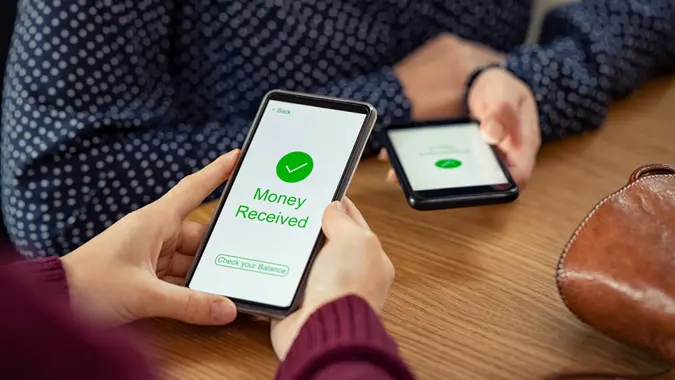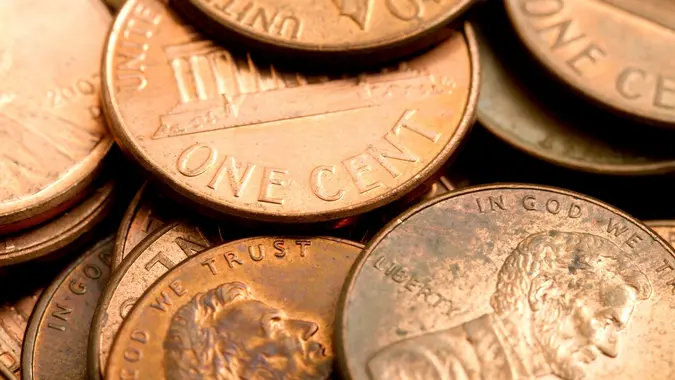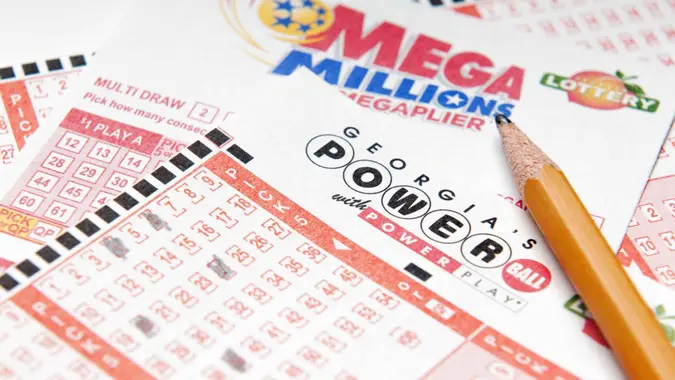8 Things To Know About Cash Envelope Budgeting, According to Personal Finance Influencer Allison Baggerly

Commitment to Our Readers
GOBankingRates' editorial team is committed to bringing you unbiased reviews and information. We use data-driven methodologies to evaluate financial products and services - our reviews and ratings are not influenced by advertisers. You can read more about our editorial guidelines and our products and services review methodology.

20 Years
Helping You Live Richer

Reviewed
by Experts

Trusted by
Millions of Readers
Saving and budgeting can be tough. You’ve researched, you’ve planned, you’ve saved and then when you check your bank balance online, you’ve somehow still lost track of expenses and have overspent. If that sounds like a familiar problem, the “cash envelope system” might just be your last hope.
If you haven’t heard of it, the cash envelope system is exactly what it sounds like: It’s a method of budgeting and saving in which you rely only on cash spending for certain expenses. Sound tricky? It’s actually rather easy and ingenious.
According to Allison Baggerly, personal finance influencer and the founder of Inspired Budget, an online resource designed “to help women confidently manage their money, pay off debt, save and build wealth,” here’s everything you need to know about this unique budgeting system.
Here’s How the Cash Envelope System Works
As Baggerly noted in a recent blog post, “basically, instead of using your debit card for certain purchases, you choose to use cash instead.” The most important reason for this? “You have to intentionally decide how much money you want to spend in certain categories in your budget. Then, head to the bank and withdraw cash from your checking account for those categories,” she wrote.
By dedicating yourself to using cash only for certain expenses, you prevent yourself from automatically leaning on your debit card — and swiping away cash you don’t have.
Don’t Withdraw All Your Money in Cash
Baggerly also asserted that this system does not require to withdraw the entirety of your bank account — after all, most of your bills are likely paid online via automatic withdrawal from your bank.
The cash envelope system requires that “you only take cash out for the categories in your budget that you want to use cash for.” For example: going to the grocery store, paying for gas or going to the movies.
Have a Place for Coins
If you’re going to start spending more cash, you’re also going to be receiving more change. Baggerly suggested using this to your advantage — you can store your change in a change jar that you cash out at the end of the month (the last time Baggerly did this, she cleared $80 in change), or keep it in your car and spend it on coffee runs.
This System Helps You Stop Overspending
As Baggerly explained, “Being able to use cash give people a tangible way to see how much money they have left.” As an example, she noted how, with this system, you don’t have to add up how much you’ve spent on groceries after three trips — you just count how much you have left in the “groceries” envelope.
Pick the Right Denominations
Before you begin using the cash envelope system, be sure to plan out your denominations. For instance, if you have a “fast food” envelope, you likely won’t need $100 bills for that, and should stick to denominations of $10 or $20 bills. Conversely, with gas being as expensive as it is, if it costs you between $70 to $90 at the pump, you’re probably safe pulling out denominations of $100 for your “gas” envelope.
Remember to Budget for Fun
Living on a budget is incredibly important, but it doesn’t mean you don’t deserve to treat yourself to something nice after all of your hard work. Everyone deserves a date night, a Starbucks run or a relaxing manicure. If you commit to the cash envelope system, you should also commit to treating yourself with a “fun” envelope.
No, You Don’t Need All Your Envelopes at All Times
As Baggerly pointed out, it would be neither safe nor smart to keep all of your envelopes with you at all times, which would be chaotic and risky. Rather, only take with you the envelopes you’d need for that day. If you’re not going to the grocery store after work, there’s no need to have your “grocery” envelope with you, for example.
Know if This System is For You
Baggerly suggested trying the cash envelope system out for at least two to three months before deciding if it’s too much work for you. She also recommended you try it for just one or two budget categories to start, just to ease your way into the system.
As she noted, “If you hate it after three months, then no hard feelings. But you might be surprised to learn that cash envelopes actually help you spend less!”
More From GOBankingRates
 Written by
Written by  Edited by
Edited by 

























